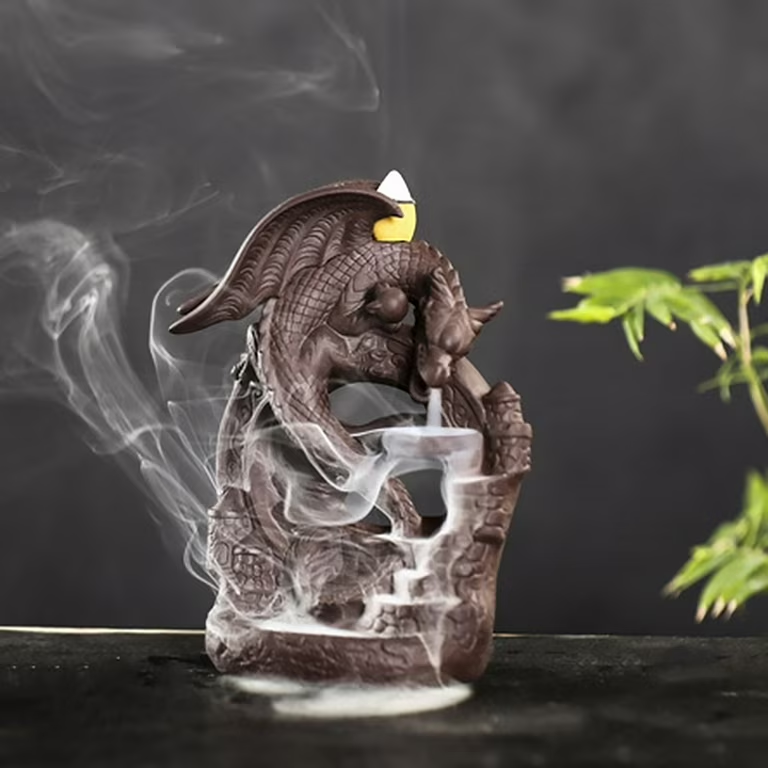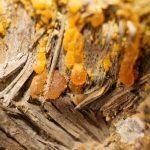Understanding Incense Smoke Composition
When we burn incense, a complex mixture of particulate matter (PM) and gases is released into the air. This mixture includes volatile organic compounds (VOCs), carbon monoxide (CO), nitrogen oxides (NOx), and sulfur dioxide (SO2), along with other compounds. Many of these components are similar to those found in cigarette smoke and can be harmful when inhaled.
The particulate matter in incense smoke primarily comprises fine and ultrafine particles. These fine particles can penetrate deep into the lungs. Upon inhalation, they have the potential to reach the bloodstream. VOCs from incense, including benzene and formaldehyde, are known for their toxic effects. They can cause sensory irritation and impact indoor air quality.
Incense smoke also contains polycyclic aromatic hydrocarbons (PAHs), a group of chemicals that occur naturally in coal, crude oil, and gasoline. They are also produced when wood, coal, oil, garbage, or incense is burned. PAHs have been linked to cancer risks when exposure occurs over an extended period.
Heavy metals like cadmium and lead are sometimes present in incense smoke. These metals can accumulate in the body over time and lead to serious health issues. Continuous exposure to these metals has been seen to affect lung health.
Another significant concern is the aromatic compounds that give incense its distinct fragrances. While these provide a pleasant scent, some contain allergens that can trigger respiratory reactions in sensitive individuals.
To sum up, incense smoke comprises various harmful chemicals and particles. These substances can affect lung health, especially with prolonged and frequent exposure inside homes or temples where ventilation may be poor. It’s crucial to understand that while incense adds to our environmental ambiance, it also introduces potential risks that should not be overlooked.
Health Implications of Incense Smoke Inhalation
Inhaling incense smoke has several health implications. Short-term exposure may cause minor effects such as headaches or nausea. However, long-term effects have more serious implications for lung health. Here, we will outline the potential health implications tied to incense smoke inhalation.
Immediate Effects on Respiratory Comfort
Incense smoke can induce an immediate reaction in the respiratory system. Those with asthma or allergies may experience difficulty breathing or an asthma attack. People may also report a burning sensation in their eyes, nose, or throat.
Chronic Exposure Leading to Respiratory Diseases
Studies have found a link between long-term incense smoke exposure and chronic respiratory diseases. As per research, regular inhalation can foster conditions like asthma, wheezing, and chronic obstructive pulmonary disease (COPD).
Effect on Lung Function
The particles in incense smoke can impair lung function. They may reduce the lung’s ability to take in and expel air efficiently. This effect compounds over time, heightening lung disease risks.
Increase in Respiratory Symptoms
Research shows that incense smoke spikes indoor pollutant levels. It can increase coughing, wheezing, and shortness of breath among sensitive individuals.
Carcinogenic Risks
Some substances in incense smoke are known carcinogens. Long-term exposure has been linked with an increased risk of lung cancer.
Aggravation of Existing Health Conditions
For people with pre-existing conditions, incense smoke can worsen their symptoms. It can lead to more frequent hospital visits and a lower quality of life.
It is evident that incense smoke inhalation can lead to a spectrum of health issues. The risks amplify with prolonged and routine exposure. Understanding these implications is crucial to protect lung health in the long run.

The Link Between Incense Burning and Respiratory Diseases
The connection between burning incense and developing respiratory diseases is a significant concern. Studies pinpoint incense smoke as a contributing factor to various chronic respiratory conditions. Here are the key findings that illustrate this link:
Increased Risk of Asthma and Allergic Reactions
Regular exposure to incense smoke raises the chance of asthma development. It can also trigger allergic reactions. Such reactions can lead to inflammation in the airways.
COPD and Chronic Bronchitis Association
Long-term incense use correlates with chronic obstructive pulmonary disease (COPD) and bronchitis. The particles in the smoke damage the lungs over time.
Lung Cancer Concerns
Some incense smoke constituents are carcinogenic. These can increase the risk of lung cancer with long-term exposure.
Impact on Children and the Elderly
Children and the elderly are more prone to respiratory diseases linked to incense burning. Their lungs are more sensitive to airborne pollutants.
Exacerbating Pre-Existing Conditions
For those with existing respiratory issues, incense smoke can worsen their symptoms. It can make respiratory diseases more severe.
Understanding the link between incense burning and respiratory diseases is crucial. It helps us protect those at higher risk and encourages the use of safer alternatives. Caution is especially important in poorly ventilated areas where smoke accumulates.

Indoor Vs. Outdoor Incense Burning and Exposure Levels
Indoor incense burning poses greater health risks than outdoor use. The confined spaces of homes and temples lead to higher concentrations of smoke. This smoke stays in the air longer than it would outdoors. Such enclosed environments often have poor ventilation. This allows pollutants to build up to harmful levels.
On the other hand, outdoor burning allows smoke to disperse quickly. Fresh air reduces the concentration of pollutants. Hence, the risk of inhaling toxic substances is less.
Studies show that indoor exposure to incense smoke severely affects lung function. It raises the risk of respiratory diseases. This is due to the prolonged inhalation of fine and ultrafine particles. These particles can penetrate deep into the lungs.
Children, the elderly, and those with pre-existing conditions are most vulnerable. They experience a higher impact from indoor incense smoke exposure. Reports suggest they face more breathing issues and hospital visits.
To sum up, indoor incense burning invites greater exposure to harmful smoke. This leads to an array of lung health concerns. It’s crucial to monitor and limit such exposure, especially in poorly ventilated areas.
Evaluating the Impact of Incense Smoke on Lung Function
The consequences of incense smoke on lung function are deeply troubling. Research connects incense smoke to reduced lung capacity. This means a person’s lungs can’t hold as much air as they should. Such changes can be measured across various parameters. These include Forced Vital Capacity (FVC) and Forced Expiratory Volume (FEV). Both FVC and FEV drop when lungs get damaged from smoke.
Incense smoke consists of fine and ultrafine particles. These particles can go deep inside lungs. They cause irritation and harm onto lung tissues. Persistent exposure to these particles leads to a decrease in Peak Expiratory Flow Rate (PEFR). This is the fastest speed a person can breathe out. A lower PEFR points to trouble in the lungs’ airways.
Studies report that incense smoke also lowers Forced Expiratory Flow (FEF) rates. FEF rates show how well the smaller airways in your lungs work. When these rates drop, it means those small airways are not working right.
Lung health experts worry about these effects. They recommend less incense use, especially indoors. For people who burn incense often, they should check how it affects their lung function. Regular health check-ups can catch problems early on. This is important for preventive care and managing symptoms.
In conclusion, the impact of incense smoke on lung function is serious. It needs our attention. With careful actions and awareness, we can work to lessen these risks. Health education and alternative practices may be the key to safer air for our lungs.
Preventive Measures and Health Education
Given the risks associated with incense smoke and lung health, adopting preventive measures is vital. Health education plays a key role in raising awareness about the potential dangers. Here are strategies to minimize the impact of incense smoke on lung function:
Maintaining Good Ventilation
Open windows and doors when burning incense. This allows fresh air to circulate, reducing smoke concentration indoors. Use exhaust fans to further improve airflow.
Limiting Use of Incense
Burn incense less frequently. Choose special occasions rather than making it a daily routine. Reduce burning time to lessen smoke exposure.
Using Safer Alternatives
Opt for smokeless or electric incense products. These release fragrance without smoke, cutting down hazardous particles.
Educating the Public
Inform people about incense smoke’s harmful effects through campaigns and health advisories. Teach proper incense use for those who choose to burn it.
Monitoring Air Quality
Use air purifiers and pollution monitors. They help keep indoor air clean. They also alert about high levels of particulate matter.
Health Checkups and Advice
Visit a doctor for lung function tests if you burn incense often. Get professional advice on reducing health risks.
Protecting Vulnerable Groups
Pay extra attention to children, the elderly, and those with existing conditions. Ensure they have limited exposure to incense smoke.
In summary, through education and the adoption of preventative habits, individuals can significantly mitigate the health risks of incense smoke. Encouraging safe practices and alternative options will help protect lung health while maintaining cultural and religious rituals.

Alternative Practices to Conventional Incense Burning
Those concerned about the health risks of incense smoke can switch to safer alternatives. Here are some suggestions:
Use Electric or Battery-operated Incense Burners
These devices warm up scented oils or wax without flames or smoke. They offer the scent of incense in a safer way.
Choose Natural Aromatherapy
Essential oils used in diffusers release fragrance safely. They do not produce smoke, making them a good option.
Opt for Beeswax or Soy Candles
Candles made of beeswax or soy burn cleaner. They emit less soot compared to traditional incense.
Try Herbal Sachets
Dried herbs and flowers in sachets provide natural scents. Place them around the home for a gentle fragrance.
Practice Indoor Plants Use
Some plants clean the air naturally. They also add a fresh aroma to home environments.
Seek Smoke-free Incense Products
Certain brands sell incense that does not produce smoke. These sticks or cones heat up without burning.
Switching to these alternatives can reduce incense poisoning symptoms. It helps maintain a fragrant home while guarding lung health. Keeping spaces well-ventilated is important when using any scented products. Health comes first, so consider these safer practices to enjoy incense without the smoke.
Policy Recommendations for Regulating Incense Use
The health risks from incense smoke suggest a need for regulations. Here are some policy recommendations:
Setting Up Indoor Air Quality Standards
Governments should create standards for indoor air quality. These standards could limit harmful substances from incense smoke in enclosed spaces.
Educating the Public on Safe Incense Use
Health departments can launch programs to teach safe incense use. This might include how often and where to burn incense.
Promoting Ventilation in Building Codes
Building codes could require better ventilation. This would help remove incense smoke in homes and public spaces.
Introducing Certification for Safer Incense Products
An official certification can show which incense products are safer. Consumers can make better choices with this information.
Monitoring Incense Smoke in Public Places
Health agencies can check incense smoke levels in places like temples. This can help protect the community’s health.
Restricting Incense Use in Public Spaces
Policies could limit when and where incense is burned in public areas. This would reduce exposure to smoke.
With these actions, we can still enjoy incense traditions. At the same time, we can protect our lung health. These recommendations aim to balance cultural practices with the need for a healthier environment.










